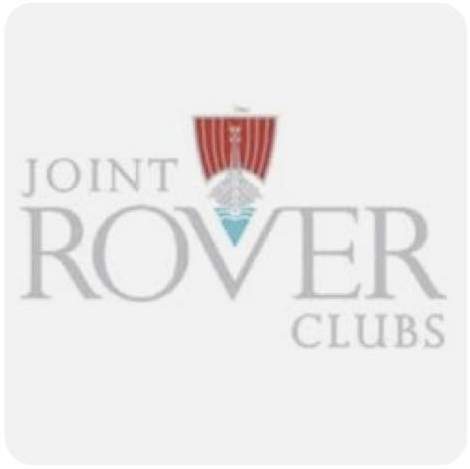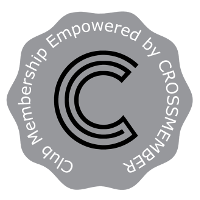An Inevitable Downturn?
At some time or another we all find our club having a very static or dwindling membership base. In the last few years, many clubs we have spoken to are reporting this as the norm. But is the downturn inevitable? General interest in classic cars is booming, attendance of the major indoor car shows is spiralling and clubs are still taking healthy numbers of new members. But in 2014, the FBHVC released figures to us that revealed that, on average, the number of club members across the board had falled by nearly 10% in the preceding 5 years. So what’s causing it?
In this two-part article we draw on our own experiences of static and dwindling membership numbers to try and pin down the factors behind these membership trends, and consider some of the changes you can make - both procedural and behavioural - to help turn the decline around. We’re not saying it will work for every club, but if you can be sure you are doing these basic things right, you are on firm foundations to help turn the decline into growth.
What was our situation?
Looking back over the last 8 years, you can see how the membership numbers of The Rover P6 Club experienced flatlining, growth and then decline, probably mirroring the trends seen by many clubs in that period and since. We were growing slowly but steadily between 2007 and 2009 (A), there were a few occasions for celebration such as in 2010 (B), but between 2011 and 2012 the membership started to dwindle away again.
Rover P6 Club Membership 2007 - 2012
The period of growth (B) coincides with the time that the P6 Rover Owners Club (the other club!) went through a pretty traumatic time resulting in the collapse of its committee. As you might expect, we took quite a lot of new members as a significant number of people crossed the floor from the P6ROC to join The Rover P6 Club. But as you can see, the benefit to our membership numbers was neither substantial nor sustained as total membership only started to dwindle away again the following year.
So what happened between 2010 and 2011 (C)? It’s easy to assume the Club had reached its natural saturation point - there are only a certain number of cars to go around, two owners clubs naturally splits the market, and (as discussed in the previous blog) social media was coming to greater prominence.
But the truth ran deeper than that. We’re not afraid to admit the problems were internal ones. By the time the authors arrived on the current committee in 2012 (D), services delivered by The Rover P6 Club were collapsing and existing members were being allowed to lapse in droves. Regardless of the numbers of new members the committee worked to attract each year, attrition was spiralling out of control and the club was gradually contracting.
It was 2013 before we were really starting to get back on track. We started by addressing attrition, sorting out our services and then implemented a proper strategy for growth based around the “Ideal Membership Cycle” framework that we devised. We were expecting to see much greater stability with a steadily growing membership base and moderate annual attrition. What we ended up with, as can be seen in the graph below, left us gobsmacked!
Rover P6 Club Membership 2012 - 2015
A - Correction and stabilisation of the services delivered by the Club
B - Existing website given a quick facelift
C - Facebook presence and Social Media strategy instigated
D - New, modern website built from scratch and aligned with the new Club philosophy
How did we get out of the Downturn?
In The Rover P6 Club, we had a history of being able to recruit about 100 new members each year, and congratulated ourselves for a good campaign. The focus was always on how many new members chose to join the Club. However if we were remaining relatively static, that meant we also had to be losing close to 100 members per year, and sometimes more. That is a large percentage of the organisation, yet questions were never really asked in sufficient detail, no metrics were kept and as a result not enough thought was put into growing the club. What were we doing wrong?
By far and away the biggest reason for our static/dwindling membership was that we were not giving a compelling reason for members to stay, and even more importantly, were not sufficiently chasing down late members for renewals.
In The Rover P6 Club, we make a point of telephoning every lapsed member. The vast majority of phone calls result in a membership renewal because lapsing members simply forgot. It often takes multiple telephone calls because they continually forget as life pressures are more important than renewing membership of a car club!
Retention versus Attrition
Like us, most clubs are well versed in how to attract new members, but the importance of retention is often overlooked. Existing members should be the easiest to retain: they have already made the decision to join the club and they know the services they have been receiving, but you have to make sure they renew. Tackling attrition is the fundamental route out of static/dwindling membership numbers. If you can continue to attract new members at the same rate, but lose fewer to attrition, the net effect is growth.
Two Ways to Reduce Attrition:
-
Actively chasing late members for renewals through all communication media at hand - letters, emails, text messages, Facebook, Skype and telephone. Most members respond well to reminders - it adds a personal touch, allows you to find out more about them and their car, but their forgetfulness is the stumbling block to reducing attrition.
-
Improvements to the levels of Service delivered by the club to the members - regular quality magazine, email communications, discounted shows etc. all contributes to a positive member experience that encourages people to rejoin.
We Can Prove It!
We proved this to be the case. During 2013 when we worked on the correction and stabilisation of our Services, we still only took our average of 105 new members. However, by focussing on point 1 above we still grew the club by 16%- double digit growth in one year by focussing on membership retention alone!
2014 continued the improvement shown in 2013… but was in a different league. The Services offered by the club had been substantially improved, including higher quality magazines with in-depth technical articles and a more “professional” layout, official membership communication 12 times per year, and a rapidly expanded events diary at national and regional levels. In 2014 the number of new joiners grew by 40% while attrition fell by 26% compared to 2012 - resulting in growth of the club by 25% in one year.
Ideal Membership Cycle
Throughout the turnaround of The Rover P6 Club, we broke down the process into three distinct phases and created what we call the Ideal Membership Cycle.
The Ideal Membership Cycle focusses on three key areas - Attract, Service and Retain - the cornerstones of growth. Viewing the process in these phases helps to distinguish the activities that need to be performed, the reasons why they need to be done, and makes it easier to allocate to the right individuals in the club.
The Ideal Membership Cycle is described fully in our next blog: Blog 3b - What is the “Ideal Membership Cycle”?
So Where Do I Start?
Everything we have mentioned above needs to be done if you want to turn around static/dwindling membership, but waiting until the next AGM and creation of the annual report is far too late to identify whether changes are having any positive impact.
Metrics of the status of the membership must be done continually as part of the religious order of membership secretaries! In the Rover P6 Club, we produce our metrics semi-automatically every time the membership system is updated, but as a minimum this should be done on a monthly basis. This will give the committee valuable insight into the status of the membership and progress to date.
In the next section we discuss the minimum metrics that should be gathered and used to compare findings on like for like basis to previous years
Metrics Analysis is key to growth
If you can’t measure it…… you can’t manage it!
We are in the digital era. With membership information coming out of our ears, it is crucial the membership secretary is adept with spreadsheet basics including filtering, sorting, pivoting and charting. It is certainly a basic requirement of our membership secretary to regularly furnish the committee with in-depth analysis of membership trends, growth and attrition rates, lead sources and demographics. This information is key to informing the club’s attraction and growth strategies - without it you are working blind. How else will you know if you are attracting, servicing and retaining members effectively?
Measuring Growth
Growth = (Number of Joiners) - (Number of Leavers)
Club growth is measured by the number of joiners minus the number of leavers in a given period. To demonstrate this, we have plotted the growth (and contraction) of The Rover P6 Club over time in the bar chart below. As you can see, by the end of 2011 the club was contracting significantly as total membership numbers were falling. By the end of 2012, we had managed to halt the decline and post a very small positive return. However since implementing our digital strategy, growth levels have soared. In 2014 we grew by 25% with 2015 set to equal that performance. By regularly collecting metrics in this way, we can predict that by the end of 2015, The Rover P6 Club will be 60% larger than it was 3 years before.
The Rover P6 Club - Joiners vs Leavers
Measuring Attrition
While the above graph represents the growth of the club, as we have stated many times in this article, attrition rate is one of the key metrics to measure. As can be seen in the chart below, during 2011 when the club was shrinking, attrition rates were very high, in excess of 25%. Over a quarter of the total membership was leaving the club in that year alone. The club was focussing all of its efforts on attracting more and more new members just to offset this loss of people who could and should so easily have been convinced to renew. Following the successful turnaround of the Services and the implementation of the digital strategy, attrition is falling year on year. 2015, although not over yet, is on course to better 2014.
The Rover P6 Club - Attrition is a key measure
First-year membership
One of the most important sub-metrics is the first-year attrition rate - these are members who leave after just one year of membership. These people will not likely have formed a loyalty to the club, they probably have greater information demands than older members, they may be younger and more fickle about which club to join, if any. Measuring members leaving after their first year of membership will go some way to measuring the overall satisfaction with the club’s services.
In 2011/2012 our first-year attrition rates were very high. Over 35% and 30% respectively. Considering the amount of effort to bring these people into the club, this is a huge amount of wasted effort only to watch them fail to renew after one year. As our services improved and the digital strategy took hold, first-year attrition rates fell faster than the general attrition rate (above) during 2013, and is on course to fall further in 2015.
The 2015 figure here is the "mid-year" rate. It is the percentage of first year members who have consciously made a decision to leave or stay, not of the entire first year population. By measuring in this way we have a reasonably accurate view at any point through the year. We have found that once this mid-year population is more than 30% of the total, the percentage has statistical significance.
Rover P6 Club - Attrition of members after one year
The membership secretary needs to keep a close eye on first-year members. These people will either stay with you for the term of their car ownership, or leave after one year because the club just didn’t satisfy their expectations. First-year attrition will be comparatively high for many reasons, the most common being serial classic car buyers swapping their car every season. However plotting this graph will highlight early if problems are getting better or worse. Once you know your historical first-year attrition rate, you will have data to compare for trend analysis as part of the committee reports.
For those members who have decided to leave, you can only learn their reasons by phoning them to find out how they found their first year experience. Even if their experience was negative, this is still a valuable insight for the club.
Understanding Demographics
We wanted to know what sort of age range we counted amongst our members, and more specifically how many of those were under 30. The question had occasionally been asked before and we'd always had a younger member on the committee to help champion the cause, but we never really had any proper understanding of our membership age profile.
We needed to know if we were storing up problems for the future by not encouraging the younger population to join the club. The fix was easy: at each renewal time, and for each new joiner, we included a field for the member to enter their year of birth. We don't need their full date of birth - that feels too much like private data and many people feel uncomfortable giving it. Storing just the year allows us to calculate every member’s age every year, whereas asking for their actual age is out of date information after one year and needs manipulating to retain accuracy.
This information allows us to understand the percentage breakdown of the club by age decade, and gives a valuable metric to inform committee decisions. If a member in their teens expresses interest in a ‘Young Members’ section of the website, we can quickly see how many other teenage/twentysomething members we have to decide whether the idea would be worth pursuing further. It also gives us a valuable understanding of where we are attracting members of different ages. For example, if we want to attract more members in their 20s, and they primarily find us through restoration events, we know it is worth our while attending more events of that type.
Collecting birth years can also overturn some commonly held misconceptions on your committee. As mentioned in the previous article, we were surprised to find that Facebook brought us far more new members in their 50s than their 20s!
Rover P6 Club - Membership demographics
As can be seen in the graph above, our membership is a reasonable approximation to a bell curve with a nice little lift appearing in the teens to 30s. In fact the general feeling is that the Rover P6 is enjoying a period of desirability among the younger classic enthusiast.
But is this a good spread of membership across the ages? In the June 2015 issue of Practical Classics, the results of their much broader survey were in. By overlaying their curve, we can see we fit the wider profile very well with a slightly higher than average number of members under the age of 40, and a few more in the over 70s category giving us a curve that is a bit more balanced than the Practical Classics’ average with less of a lean to the right.
Comparison to Practical Classics Average age spread
How are members finding you?
It is important to understand where your new members are finding you. If you know where they first heard of you, you are in a much better position to decide how you should spend your advertising budget next year. You also get important feedback about the effectiveness of big events, such as the NEC Classic Motor Show, and whether word of mouth is working in your favour. Capture this information on the joining/renewal forms as well, but keep it to a series of options for the member to select as this makes it possible to plot graphically to spot trends easily.
Our results surprised even us as you can see from the pie chart below
The Rover P6 Club - New member sources
For us, by far and away the best way to attract new members came from natural and free sources - website, shows (especially the NEC), member recommendation (as a result of member satisfaction) and Facebook! Print advertising was far down the list at 4%, and most of that was as a result of editorial articles referencing us rather than paid-for advertising.
Although we had been on Facebook for several years, Facebook as a lead source leapt from zero to 18% (currently averaging 16%) directly as a result of our digital strategy. We will cover the principles of this strategy in Part 6 - Promoting the Club through Social Media.
Reporting on Club Metrics
Monthly metrics are important. Comparison of metrics allows for comparison of month-to-month, quarter-to-quarter and year-to-year. Trends can be identified and, backed up with the data, sound decisions can be made to either capitalise on it, or fix it! Some good metrics that we use in The Rover P6 Club include:
-
Total number of members (per week, per month, per quarter, per year)
-
Total number of new members (pw, pm, pq, py)
-
Whether new membership is higher or lower than this point last year, and by what percentage
-
Whether attrition is stable, increasing or decreasing on this point last year
-
What the projected number of new members will be by the end of the month/quarter/year based on current growth rates - this gives a projection of club funds for spending plans
-
Projected total membership by the end of the current year at
-
last year’s attrition rate
-
current experienced 'mid-year' attrition rate
-
Number of membership renewals outstanding by 1, 2, or 3+ months
-
Top 5 reasons for leaving
-
Lead sources for new memberships
-
How many members resulted from advertising - is advertising therefore cost effective and offering return on investment?
If you can state even half of the above, the committee will have a far better understanding of whether the decisions they make centrally about events, magazines, social media strategies and advertising/publicity is working. All committees are making decisions on behalf of the membership, and all are using members’ subscription money to put them into practice. It’s only right that the members’ overall feedback and behaviours should inform these decisions.
If you get these decisions right, attracting and servicing the membership should be easier and much more effective.
Summary
-
Attrition is the biggest cause of static or dwindling membership
-
Focussing on retaining and servicing existing members will increase satisfaction and reduce attrition
-
Understand the membership population and communicate with them regularly
-
Capture metrics on growth, attrition, first-year members, lead sources, overdue numbers and demographics
-
Actively use metrics to make predictions and inform committee decisions
In Part 3b, we look at the management strategy we devised by asking ourselves “What is the ideal membership cycle?” By thinking this through in relation to our own problems, we were soon able to isolate key areas to address and spend energy on, some more surprising than others! Again, we will be backing this up with our statistical evidence.
Michael Allen
Brian Humphreys
Next time: What is the “Ideal Membership Cycle”?




